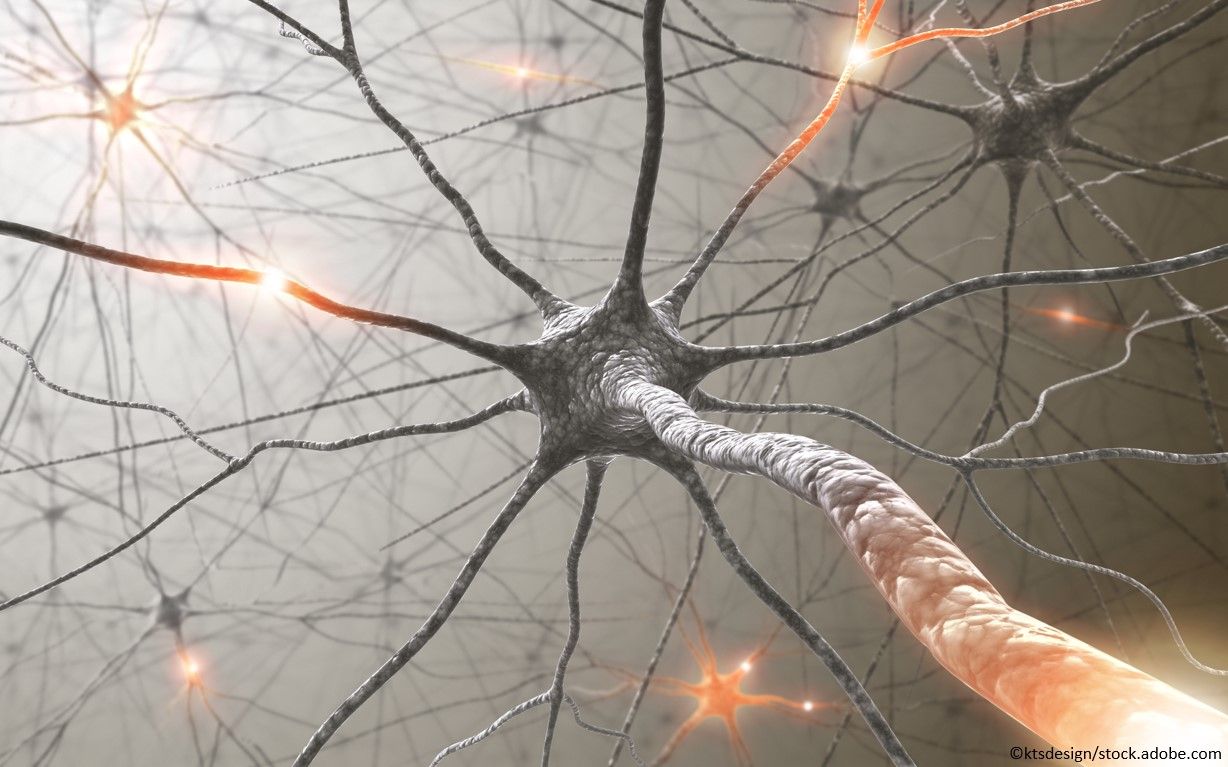- Clinical Technology
- Adult Immunization
- Hepatology
- Pediatric Immunization
- Screening
- Psychiatry
- Allergy
- Women's Health
- Cardiology
- Pediatrics
- Dermatology
- Endocrinology
- Pain Management
- Gastroenterology
- Infectious Disease
- Obesity Medicine
- Rheumatology
- Nephrology
- Neurology
- Pulmonology
Anosmia, Other Neurologic Symptoms Seen in Half of COVID-19 Patients at ED Presentation
Study: Anosmia, myalgias, and headache were the most common extrapulmonary symptoms seen in COVID-19 patients at first presentation, say investigators.
©ktsdesign/stock.adobe.com

Neurologic symptoms were the most common extrapulmonary manifestations of infection with SARS-CoV-2, observed in half of patients presenting to the emergency department (ED), according to a new study.
The most frequently reported neurologic symptoms were anosmia, myalgia, and headache, wrote study authors in the journal Brain and Behavior, with only fever, cough, dyspnea, and asthenia being reported more frequently.
Citing the largely unexplored area of frequency, type, and onset of neurologic symptoms associated with COVID-19, David Garcia-Azorin, PhD, neurologist and researcher at Hospital Clínico Universitario de Valladolid, Spain, and colleagues performed a retrospective cohort analysis of 576 adults (43.3% women; mean age, 67.2 years) with confirmed COVID-19 who presented to the ED of a tertiary public hospital in Spain and were admitted between March 8 to April 11, 2020. Follow-up was until May 1, 2020, including a minimum of 20 days of follow-up after admission for all patients.
Inclusion criteria were: age ≥18 years; COVID-19 confirmed by PCR assay; hospital admission via ED.
More than half (55.6%) of patients described neurologic symptoms at the time of ED presentation, investigators reported. Anosmia was the most common (25.3%), followed by myalgia (24.1%), headache (23.8%) and altered mental status (17%).
Least commonly reported were “sudden” focal symptoms (2.1%), vertigo (1.9%) ataxia (1%) and seizures (0.5%). More than half (54.2%) of all those reporting neurologic symptoms said those symptoms began on the same day that their other COVID-19 symptoms started.
Garcia-Azorin and colleagues note that patients with neurologic symptoms presented to the ED somewhat later than those without them (7.9 vs 6.6 days; p=.19); also, they tended to be younger, have better baseline performance, and fewer cardiac disorders.
Authors note "striking findings"
Among other findings, 0.6% of those presenting with neurologic symptoms reported no typical COVID-19 symptoms and 1.9% had normal laboratory results. The authors calculated that in those with neurologic symptoms at presentation, the presence of other COVID-19 symptoms was associated with a sensitivity of 98.7% (95% CI, 96.6-99.6), and the presence of laboratory abnormalities with a sensitivity of 98.1% (95% CI: 95.7-99.2).

The authors write that “one of the most striking findings of the study was the impact of neurological symptoms on prognosis of patients.” Specifically, they found that anosmia was an independent predictor of lower in-hospital mortality (HR = 0.358; 95% CI, 0.14-0.916), while altered mental status was associated with higher in-hospital mortality (HR =1.867, 95% CI, 1.162–3.001).
“We analyzed the association between the presence of neurological symptoms on presentation, and after adjusting for age, sex, baseline performance, time since the symptoms onset, vascular risk factors, comorbidities, and general symptoms, anosmia and altered mental status were still associated with a lower and higher odd of mortality, respectively.
In univariate analysis, typical comorbidities (eg, diabetes, cardiovascular disease) were associated with worse prognoses, but not, the authors point out, in the multivariate analysis.
The conclude: “The presence of neurological symptoms at the moment of ED presentation was an independent predictor of mortality. Patients with altered mental status died more and earlier, and patients with anosmia had a lower risk of mortality.”
Study limitations, Garcia-Azorin et al write, include the single-center source of data and the retrospective design. They also state that the “precise signification” of each symptom should be analyzed separately. “Studies assessing large samples of patients should clarify the role of the few neurospecfic symptoms.
